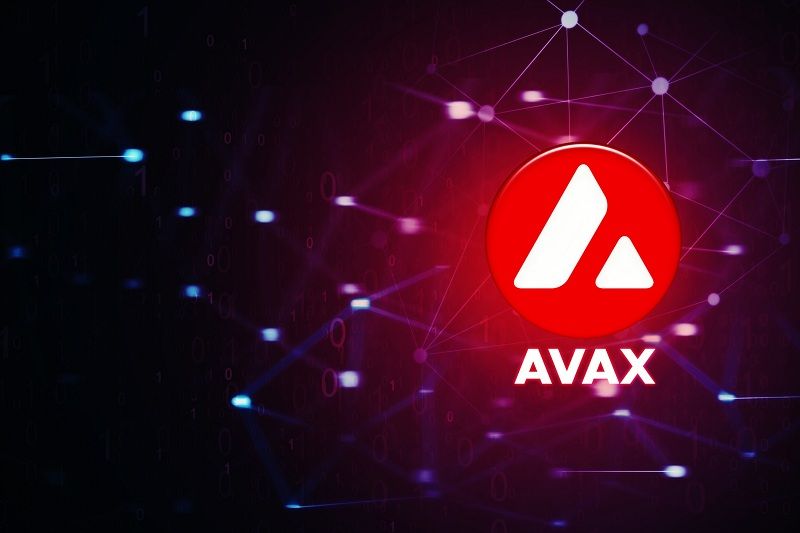Avalanche (AVAX) price has moved sideways this month as it continued underperforming other cryptocurrencies like Tron, Toncoin, Bitcoin, and Mantra. It was trading at $23.63, down by more than 63% from its highest point this year, giving it a valuation of over $9.5 billion.
Losing market share
Avalanche, a layer-1 network that is similar to Ethereum, Solana, and Sui. Its goal is to give developers a chance to build decentralized applications (dApps) thanks to its faster speeds and low transaction costs.
However, there are signs that Avalanche is losing market share to layer-1 networks like Sui and layer-2 blockchains like Arbitrum and Base, the blockchain network started by Coinbase.
Data by DeFi Llama shows that Avalanche has 405 dApps in its ecosystems and a total value locked of over $905 million. It is the 7th biggest chain in the industry and is now smaller than Arbitrum and Base, which has over $2.4 billion and $1.6 billion, respectively. Base’s growth has been more phenomenal since it was launched a year ago.
More data shows that Avalanche has over 26,000 active addresses, down from over a million a few years ago. This means that the network is losing momentum among users.
Most importantly, the volume of stablecoins in the ecosystem has continued moving downwards. After peaking at over $4.3 billion in 2022, the amount has dropped to $2.1 billion.
In contrast, the amount of stablecoins in Tron has jumped to $60 billion while those in Ethereum have soared to over $83 billion.
Stablecoins are important assets in any blockchain because of their growing market share in payments.
A blockchain like Tron handles over $40 billion in stablecoins each day, more than other popular companies like Visa and Mastercard. Analysts believe that stablecoins will continue playing an important role in the financial services industry in the future.
Avalanche DEX and meme coins
Meanwhile, Avalanche has also lost market share in the Decentralized Exchange (DEX) industry. DEX networks in its blockchain handled transactions worth over $2.3 billion in July, lower than other blockchains like Ethereum, Arbitrum, Base, Solana, and BNB Smart Chain.
The same happened in August as the network handled $2.7 billion. Arbitrum’s volume was $21.23 billion while Base handled $16 billion. Month-to-date, Avalanche has handled $1.2 billion, lower than other top layer-1 and layer-2 networks.
The biggest DEX networks in Avalanche are the likes of Trader Joe, Pharaoh Exchange, Dexalot, Woofi, Dodo, and GMX. Trader Joe handled $346 million in the last seven days while the rest had less than $60 million each.
DEX is an important part in the blockchain industry because of the volume they are handling and the potential fees.
Meanwhile, Avalanche has no market share in the meme coin industry that is now dominated by Solana, Ethereum, and Tron. Solana’s Pump.fun tokens have accumulated over $500 million in market cap while Tron’s SunPump have also crossed the $550 million valuation. These ecosystems have generated millions of dollars in fees.
Avalanche collects a minuscule amount of money in fees compared to other blockchains. According to DeFi Llama, it made just $20,800 in fees in the last 24 hours, down from over $5 million in December last year.
Avalanche token unlocks and dilution
Additionally, the network still has millions of tokens being locked, meaning that more token unlocks are coming. The most recent token unlock happened in August when 9.54 million AVAX tokens were released. These unlocks happen after every two or three months, with most of them going to the team followed by strategic partners, foundation, and airdrop.
Avalanche has a circulating supply of 405 million tokens against a maximum supply of 715 million, meaning that holders should expect dilutions until July 2030.
Dilution is a big deal for Avalanche because many investors buy it for its 7% staking yield. However, a combination of falling network fees and more tokens in staking pools means that the rewards will continue falling. Data by Staking Rewards shows that the staking reward has been in a strong downward trend, moving to 7.90%, down from almost 8% in August.
Avalanche price analysis
The AVAX price underperformed the market after it formed a death cross on June 17 as the 200-day and 50-day Exponential Moving Averages (EMA) made a bearish crossover. In price action analysis, this pattern is one of the most bearish signs in the market.
The token has remained below all moving averages and the 61.8% Fibonacci Retracement point. Therefore, the path of the least resistance for the Avalanche price is downwards, with the next point to watch being at $17.37, its lowest swing on August 15.
However, the only hope for the coin is that Bitcoin is seeing more ETF inflows, meaning that it could bounce back soon. If this happens, other altcoins like Avalanche and Solana could stage a strong comeback.
The post Here’s why Avalanche (AVAX) price is at an elevated risk appeared first on Invezz

